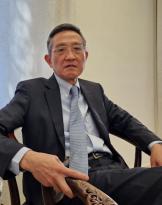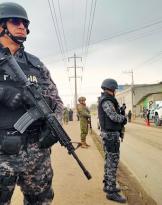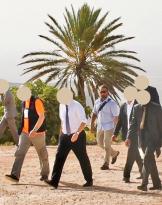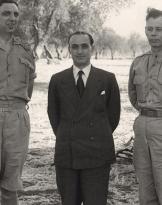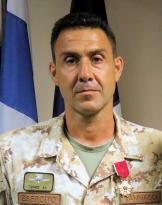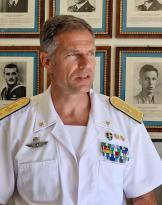What comes to mind when you hear the term "Boeing"? Probably the famous "Jumbo", a flying ship that still today represents the best airliner ever built and a coveted destination for any civilian pilot. In general, definitely a commercial jet.
But things are changing. The company is expanding its widespread appreciation for the quality of its products in other sectors such as Defense.
Aircraft like the ones are already celebrated today Harrier of the Navy or the Chinook of the Army, the combination with Boeing as their producer is not so immediate.
It is not impossible that in a few years, hearing the name of the builder, instinctively think of a military aircraft ...
To understand the evolution, strategies and programs of the largest aerospace industry on the planet, we met the president of Boeing Italia and managing director of Boeing Sud Europa, Antonio De Palmas.
What does Italy represent for Boeing?
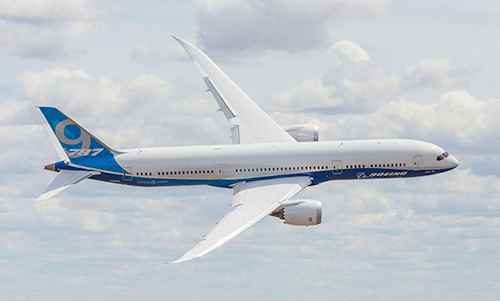 The Italian market is certainly important from an industrial point of view with regard to civil production. I quote, for example, the engine parts of the 787 and the 777 we realize with Avio through General Electric and the collaboration with Leonardo, which in Grottaglie and Foggia, respectively, builds two fuselage sections (44-46) and the horizontal stabilizer of the 787.
The Italian market is certainly important from an industrial point of view with regard to civil production. I quote, for example, the engine parts of the 787 and the 777 we realize with Avio through General Electric and the collaboration with Leonardo, which in Grottaglie and Foggia, respectively, builds two fuselage sections (44-46) and the horizontal stabilizer of the 787.
The commercial field of civil aviation in recent years has not provided great satisfaction, with some excellent exception.
With the Defense instead we have grown up becoming a reference, I hope stable. There are many products online. The assets or services purchased by the armed forces have always been implemented in partnership with national companies. The expenses through Boeing therefore have a constant return to the country.
In recent times you have been focusing on providing services ...
The company sees in the commercial and defense services a sector in constant and substantial growth.
On July XNUMXst, our third service business unit debuted. Previously, after-sales support, conversions and training were within two business units: Civil (BCA - Boeing Commercial Airplanes) and Defense (BDS - Boeing Defense, Space & Security).
The new reality optimizes and improves the care of services, separating it from products or platforms, also reflecting the growth of the specific market. This sector in 10 years is worth as much as the total commercial and defense market. We're talking about trillions of dollars.
 The difference is that we are dealing with a fragmented market. However, Boeing's growth potential in this sector is substantial.
The difference is that we are dealing with a fragmented market. However, Boeing's growth potential in this sector is substantial.
In Italy we have already had a logistic base in Pratica di Mare for some time. Provides support to the four Air Force tankers, the KC-767 . The PBL (Performance Based Logistics) support system, instead of having hours of work or spare parts as a parameter, uses flight hours as a reference. We are therefore paid according to the use of an aircraft. Today the tanker has reached an 99,6% of mission readiness!
The KC-767 it is a very important asset for the country: it has accumulated over 20.000 flight hours in almost 5.500 missions and has distributed over 63 millions of pounds of fuel. It is also certified to supply all the fighters, from the Eurofighter to the Tornado, in addition to the JSF (first non-US aircraft to obtain the certification, v.articolo).
With the White Paper special attention has been paid to logistics: without it, machines do not fly or fly to a very small extent.
With the cuts at the Army aviation this system - linked to the hours of flight - will make you much less!
Sure. Funds must be optimized at a time when budgets and financial challenges are shrinking. If I have 50 machines and they fly 20 I am wasting money, if I have 30 and I can make 25 fly, I'm optimizing the resources instead. This concept is a practice in overhead lines: airplanes never remain unused on the ground. In the Defense sector, although with the appropriate differences, to save money, the rate of operation of the assets should be preferred.

Beyond the large groups there are many small and medium-sized companies in Italy.
It's true. In fact, already for the aforementioned PBL we collaborate with some small companies and in the contracts with giants like Leonardo are involved as many small businesses. They are characterized by high competitiveness: high quality of the products supplied and low costs.
This year we have reached an agreement with SACE (100% company of the Cassa depositi e prestiti Group that supports Italian companies in their growth and internationalization process, ndr): it will guarantee the financing of Boeing aircraft in the world up to the amount allocated to Italian companies. This incentive favors will further foster the development and know-how of national companies. In order to promote collaboration with Boeing, we have developed, in collaboration with SACE, training courses for small and medium-sized companies to overcome technicalities that may hinder the participation in tenders in the Boeing system.
The CH-47 F has been in service in the Army for three years now. There is talk of an interest in the acquisition of another four units in the “extended range” version. The US Army would like further evolution of the CH-47 within a few years. Can we hope for the future version destined for the USA?
We are dealing with the Ministry of Defense to understand the necessary requirements. We are talking mostly about means destined for special forces. In addition to greater autonomy we speak of more powerful and powerful systems.
We already have today a version for the special forces that won in Canada and Singapore. The higher the specifications of a product, the higher the costs.
In Italy we still have to understand what we want because of the economic availability.

The CH-47 F was made with Leonardo. Collaboration destined to continue in the future?
Absolutely. Leonardo will always have an important role, the capabilities of his Helicopters Division are and will always be relevant.
In the USA, for the race to replace the Huey fleet, you are partner with the MH-139 (v.link).
Exact. It is an important competition. When Boeing has not ready a solution capable of fully satisfying a client's request, he has no qualms about seeking an agreement with a partner who can offer the best answer to a requirement. It will be tough, but the 139 is a really excellent candidate for the ongoing challenge. Winning will further strengthen the partnership with Leonardo.
In the TX program intended to provide a new trainer you are however antagonists (v.articolo)! Leonardo competes with the T-100 (advanced version of the 346) while Boeing has agreed with Saab for its TX ... It is humanly easy to combine alliances and rivalries?
Sometimes it is not simple but it is necessary. In the past, especially in the aerospace industry, they had become accustomed to living together in such situations.
Success is dictated by the ability to work in agreement with others. The "programs" indicate a shared goal that obliges everyone to offer the best result in collaboration with other companies. You can not win alone. We need flexibility and this ambivalence, even if in the Defense sector it is very attenuated compared to other fields, it is natural. Even in the same helicopter sector, on other fronts, we are competing with Leonardo herself, but where there are spaces we collaborate.
 For the Navy and its future units it is assumed the acquisition of V-22 Osprey. For other programs in the US, however, Boeing seems to have abandoned the "convertiplane" solution in favor of more traditional projects (v.articolo). Step back?
For the Navy and its future units it is assumed the acquisition of V-22 Osprey. For other programs in the US, however, Boeing seems to have abandoned the "convertiplane" solution in favor of more traditional projects (v.articolo). Step back?
The Osprey, built in partnership with Bell, is going very well among our customers and in the future logistics of the US Navy will be an indispensable carrier for the F-35 program. It is certainly a challenging asset from an economic point of view.
From a technological point of view no steps back. Try again it is the strong interest from the international point of view.
Why "indispensable" for the F-35 program?
We think about the transport of components such as engines on aircraft carriers: the V-22 has a unique load capacity and speed. Other solutions, in the end, are more expensive.
With the entry into service of the JSF we therefore expect to see the demand for our convertiplanes increase considerably.
Maybe with the entry into service of the LHD (v.articolo) we will buy someone too.
Let's hope.
In case it will be the same of the Marines or will be "Italianized"?
The machine is at the moment already complete, at the moment we do not receive questions of great customizations.
 Other aircraft for the Navy?
Other aircraft for the Navy?
There is interest in the P-8 Poseidon patrol. An aircraft already in service with the US Navy and the Australian Navy which has recently obtained a commitment from the United Kingdom and now also meets the interests of Norway.
Soon two ScanEagle systems (drones, ed.) Should also come into service. Operating systems for many years in various armed forces that benefit from considerable technological development.
Are only two examples a prelude to other purchases?
Could be. How they can represent a first step towards systems of a higher class, as happened in many other countries such as Spain, Holland or the UK.
With the Air Force the most interesting aircraft for Boeing is, as already mentioned, the KC-767. We were also the launch customer! Why was the plane sold only to Japan as well as Italy? Can the acquisition of KC-46 also be possible for Italy in the future?
We are committed to both countries to guarantee, for many years, a structure that demonstrates very high efficiency. With Italy and Japan we plan possible future developments of the platform.
The KC-46 (the winner of the race for the next US Air Force tanker, developed by the KC-767, ed) - remember - has different mission requirements and is not a multi-role machine, it is almost exclusively from refueling in flight, more specialized but less versatile.
The missions of the Italian 767 are extremely varied and have fully appreciated the aircraft to our Air Force.
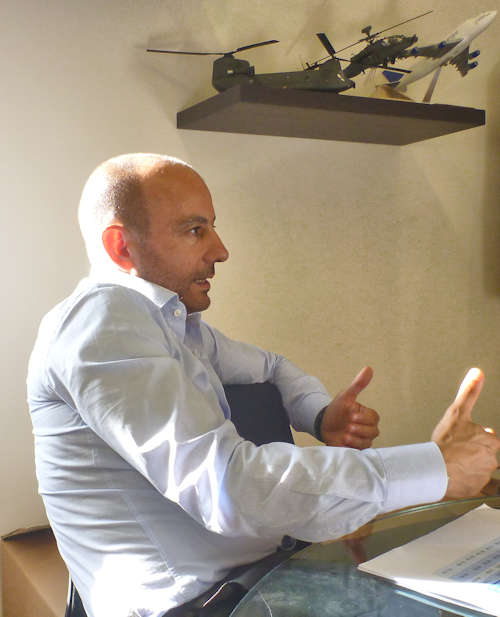
Over time you can think of a substitute.
The KC-46 will soon become the global reference for in-flight refueling.
You are president of Boeing Italia, a colossus whose management is based in the States. Is it easy to explain to them the logic and characteristics of our country?
Sometimes yes, sometimes less. It is a complex market and all its peculiarities or difficulties must be understood. This is certainly not one of the most difficult markets.
Italy is in excellent relations with the Boeing world with long-lasting relationships between the commercial and military world. Let's talk about a time span of almost 70 years.
Every year we invest almost a billion and three hundred million dollars in the country. We have been doing it for a long time, with constancy. This makes us credible interlocutors.
The market in which we operate has very long trading cycles. Being perceived as a reliable and stable player is essential.
Boeing is now seen as a global company, no longer "American".
In the civil field, you certainly do not need to improve your reputation.
Definitely. But you think that 10 years ago the turnover related to Defense outside the United States was just 7%. Last year this value rose to 30% and this year could touch the 35%!
The international defense market will become increasingly important for Boeing.
Of course, for an ordinary person, it is immediate to combine the name "Boeing" with civilian aircraft. But I think it also happens for insiders ...
Of course with Lockheed Martin, with the JSF, the opposite happens.
Boeing is however helped in this new perception by the helicopter part with two products: the Chinook and the Apache. The former records a very strong demand and is practically without competitors on the market, the latter has some more competitors but is still considered the reference. They help us a lot as a business card in the Defense market.

(photo: Defense Online / Boeing / US Army / US Navy / Air Force)



